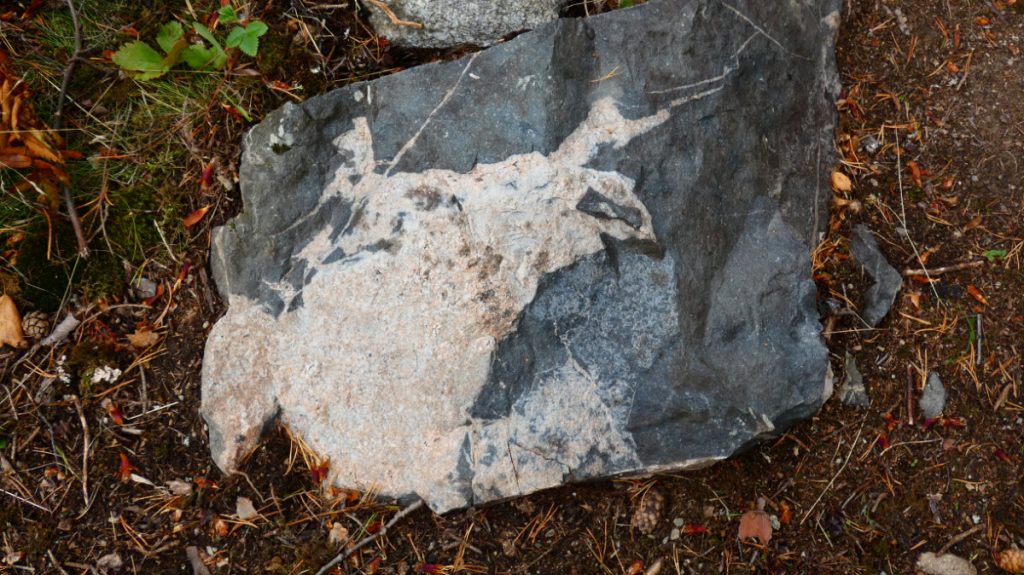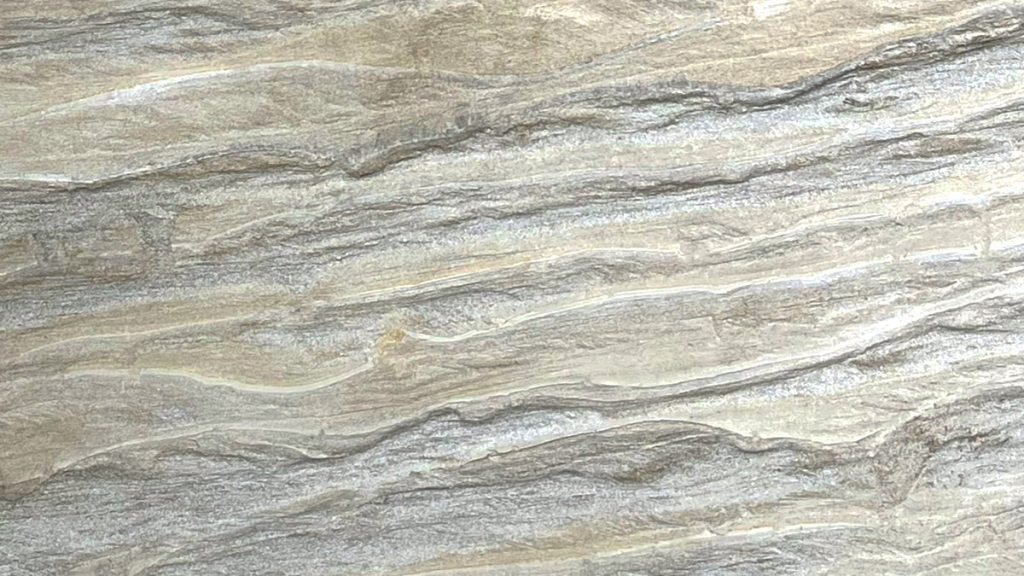Trätojordsbacken
Magma chamber in central Hammarstrand
Trätojordsbacken is the event site in central Hammarstrand. On stage here in the 1970s appeared various groups including ABBA. Still today concerts and party nights are organised. This is also where you can look into a 1,500 million year old magma chamber.
Magma from within the earth formed the chamber
The chamber was formed of masses of molten rock, magmas that pushed upwards from deep within the earth and gathered a few kilometres below the earth´s surface. There they hardened and formed different species of rocks.
Since then all the material that had been above the chamber has weathered and eroded making it possible for you to look right into the chamber. This is unique to Ragunda.

Masses of molten rock became red granite and dark gabbro
The peculiar effect in Ragunda is that two melts rose from deep within the earth at the same time but separately, 1,500 million years ago. The magmas were of completely contrasting compositions and so behaved in different ways.
When in due course the magmas cooled and became solid they formed rocks. One of the magmas was dark, almost black and became gabbro. The other one was red in colour and became granite.

Pulses of magma filled the chamber
Pulses of warm magma were continuously adding to the magma chamber from below. Magma that had already solidified could then heat up and become liquid again. The magmas interacted in batches, forming different patterns depending on whether they were liquid at the same time or not. Gabbro and granite melt at different temperatures. Gabbro is several hundred degrees warmer when melted compared to granite. The difference in temperatures between the two magmas meant that they would not fully blend everywhere.

Magmatic breccia – angular fragments of gabbro in granite
At times the gabbro magma had started to cool off or become cold before a new pulse of hot granite magma came pushing upwards. This would cause the gabbro to crack and break into angular fragments. This is called magmatic breccia.
In case the almost solid granite encountered a pulse of hot gabbro, the granite may have been a bit burned by the gabbro. This would be seen as a white edge around the granite.

Magma mingling – "pillows" of gabbro in granite
In many places you can see patterns of the gabbro in the granite, looking like pillows. This is called magma mingling and occurred at the time when both magma types were partially liquid at the same time.
The pillows can be found here but they are easier to see and identify at other sites such as Stadsberget and Prästberget 1.

Weathering worns down rocks
Rock is continuously worn down by, for example, the sun, wind, and water, meaning that rock surfaces are in constant stage of change.
Here you can see traces of the weathering rock. In the border area where gabbro encounters granite you can see, in some places that the gabbro has abraded more than the granite. One reason for this difference is that the rocks contain minerals that weather more or less easily. Quartz is in general a mineral that does not weather easily.

Granite resistant to weathering
Granite contains much quartz which makes it more resistant to weathering compared to others such as gabbro. The exception is rapakivi granite where the texture and the fact that it contains a calcium-rich type of the mineral feldspar (plagioclase) which makes it more prone to weather.
More information
Sites to visit on Theme Continental Drift
More site photos



Places to visit nearby
Practicalities
Accessibility
See Accessibility.
Activities
Nothing special at the site. See instead Activities in Ragunda.
Eating and drinking
The nearest grocery store, café and eatery are in Hammarstrand, see Eating and drinking in Ragunda.
Accommodation
Missing on site, but various options are available nearby. See Accommodation in Ragunda.
Getting here
SWEREF 99 TM N: 6 998 383 E: 568 070
WGS84 N: 63,108412° E: 16,348939°



